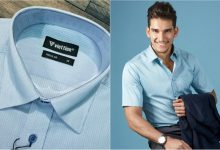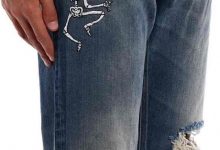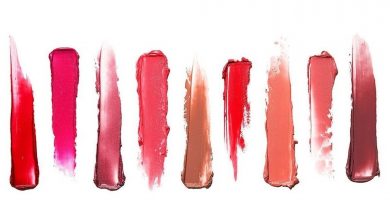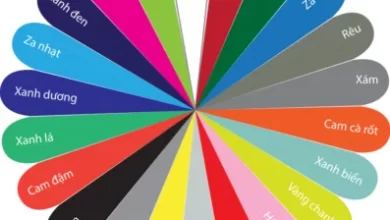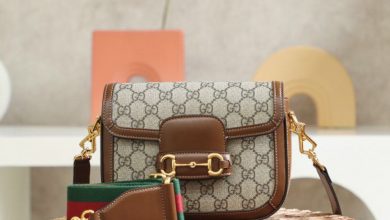Wrinkle Free Garments – Cập nhật mới nhất 2024

Tạp chí công nghệ da, sản phẩm thuộc da, chia sẻ kiến thức chuyên ngành da thuộc, cập nhật các xu hướng thời trang và đặc biệt giúp bạn lựa chọn đồ da (túi da, ví da, thắt lưng da, cặp da, giày da,…) và công nghệ sản xuất da thuộc tiên tiến.
3+ Wrinkle Free Garments cập nhật kiến thức mới nhất 2024
Ironing the garments is considered a myth today. Our time-starved people want to spend minimum after cloth-care. Ironing the garments has lost the heat after the developments in wrinkle-resistant fabric finishes. Wrinkle-free finishes have hit the market of casual men’s trousers in just five years.
The Wrinkle free quality of garment has been labeled various terms like Wrinkle-resistant, wrinkle free, durable press and permanent press. The industry also uses these terms for several finishing agents that have been appended to fabrics to avoid or reduce the amount of wrinkles.
Today’s drive of wrinkle-resistant informal wear is not just a reprocessing of the dry, brittle durable press in wash and wear finishes of yesterday. The most modern wrinkle-resistant fabrics are newly devised products that were born of modern technology.
These wrinkle-resistant finishes were favored in the early 90’s when they were inserted into men’s all-cotton trousers. The finishes have given the root industry a new life on lease. Hagger and Farah are the first companies that introduced wrinkle-resistant pants to their bands. In 1992, Hagger introduced a line called “Wrinkle’Free” all-cotton pants. The line made a big impression on the market and by December 1993 Haggar gained 76 percent of the market in that class. Savan line is Farah’s edition of the wrinkle-resistant pants. These lines of finishes were flattened with Duck Head and Levi Strauss Dockers.
Wrinkle-resistant garments are not free from problems; various troubles like attraction to grease and oil, fabric debasement and environmental interests are connected with these garments. Though, most of the problems have been reduced, companies are continuously uncovering techniques to better the properties. To improve the aesthetics is the biggest improvements.
Wrinkle-resistant garments should inevitably there in wardrobes. After rejuvenating the bottom industry, the finish has hit the other segments of menswear industry like woven and knitted dress and sports shirts, jeans and suits. Wrinkle-resistant clothing incorporates even the children’s attires and areas of womenswear market. The success of the finishes on garments will result into extra progress in other markets.
Due to the escalating fame of formal wears in the work place, the wrinkle-resistant industry has secured new heights in garment industry. Wrinkle-resistant garments are found not only at department stores and mail order catalogues but also at stores like Wal-Mart and Kmart. The home furnishing industry has grasped the wrinkle free concept by adding the finishes to sheets.
Our belief that wrinkle-resistant garments are costlier than finish-less ones is right; but for the most part they are moderately rated. All the products of wrinkle-resistant items do not give the same result. There are no inflexible courses of actions for manufacturers; hence, it is suggested that customer should buy a popular brand that s/he trusts.
The wrinkle free finish (various other terms are “Easy Care”, “Durable Press”, “Wrinkle-Resistant”, “Wash and Wear”, “No-Iron” etc.) is achieved by cross-linking cotton. Permanent press finishes build cross-links between adjoining cellulose polymer chains; these provide cotton some flexibility and resiliency. Such cross-linked cotton can return to its earlier condition from deformity stresses and thus wrinkles will not create.
Even today, DMDHEU is an important cross-linking force. With magnesium chloride as the acid catalyst to start a reaction, it creates cross-links in the formless areas of the fibre. Through the counteraction (>NCH2=>NH+HCHO), free formaldehyde is discharged. Insufficient curing also results into the discharge of formaldehyde at an extreme temperature. Various techniques have been evolved to confine the amount of formaldehyde discharged, such as after-washing of cured fabrics, the insertion of formaldehyde scavengers like carbohydrazide to the bath, use of urea in the pad-bath or application through a spray, modification of DMDHEU to etherized, glycolated or methylated DMDHEU.
Options to DMDHEU are also being researched. Major choices are polycarboxlicacids, typically BTCA (1,2,3,4 Butane Tetra Carboxylic Acid) or citric acid. However, BTCA is not cheap to use and citric acid creates yellowing. Another technique has been to use polymers of maleic acid to create ester cross-links, and yet another to fix a quaternary group through an epoxidation counteraction to the cellulose chain to create cross-links. Research on all these options is in progress. Commercially, it is the remodelled DMDHEU (glycolated or methylated) that is most used presently. The item is pre-cushioned to check untimely curing and also pre-merged with a catalyst. Today the catalysts with the basis of Magnesium are accepted most. When curing times are scanty, citric acid or aluminium chloride can also be compounded to speed up catalysis.
Following is a standard method for a pre-cure or post-cure finish:
DMDHEU (45%), 2-20% of weight of DMDHEU but not less than 1% owb; wetting agent. 0.1% owb; and softeners, 2-8% owb.
The wetting property lets the fibre internally penetrated, so that cross-linking might occur all through the fibre cross-section. A high-density polyethylene brings back some of the missing tear force and abrasion resistance by imparting lubrication. It also possesses a collaborative effect with silicone or fat-based softeners to create an agreeable hand. Among the silicone softeners, counteractive polysiloxanies with silanol functional end-groups (Fig 2) perform as elastomeric finishes providing better wrinkle resistance, good dimensional firmness (smooth drying properties) and exceptional soft handle with good sewing ability. They can also decrease free formaldehyde discharge by re-establishing part of the resin. Various types are available today: Pretavyl VP 1601A by Boehme Filatex Inc., and siltouch RS by Yorkshire Chemicals.
Types of Technology for obtaining “wrinkle free” finish
The dominant application techniques presently employed are based on the following processes: pre-cure; post-cure; garment-dip; spray (metered) application; and Vapour phase.
In pre-cure, the fabric is processed with resin, dried and cured in flat open-width form. This fabric can be used to manufacture garments that stand firm against wrinkling throughout wearing and have a soft look after washing and tumble drying. Since the cross-linked fabric defends any attempt to press in wrinkles, it will be impossible to bring in sharp long-lasting creases. Generally, such fabrics are applied in the womenswear market for some skirts, casual trousers and shirting where smoothness is the main benchmark.
A post-cure process provides a choice to manufacture a garment with soft drying and wrinkle resistant agents along with sharp creases that have a lasting effect for the life of the garment. In this treatment the resin is padded onto the fabric and dried at low temperature (as in the Koretron process). The fabric is then cut, garment constructed and creases pressed into the garment. An extreme temperature treatment in this make up is given to cross-link resin. Though this procedure provides extraordinary results, it has not been doing well with garment producers because of apparent limitations of colours, styles and fabric weight, and the requirement for a direct connection among mills, garment manufacturers and retailers.
To improve this procedure, a company in Japan applied a post-cure finish to fabric that was mercerised in liquid ammonia, giving excellent easy care properties together with the soft handle of non-cross-linked cotton. Liquid ammonia mercerisation is a process applied at ultra-low temperatures and it generates deconvolution of cotton, smoothening of the surface, swelling of the fibre to a circular cross section, enhanced absorbency, firmness and shine, and a very soft touch.
The other three alternatives are useful to finish the fabric only after it has been composed into a garment. In the garment-dip method, garments are fabricated from non-resinated fabric, then infused with a resin process similar to that applied to the post-cure process, extracted to about 65% wet pick-up and then tumble dried to 8-10% moisture stuff, a crucial factor that is determined using a moisture metre.
In the spray method, the resin is smeared by spraying it onto the garment during tumbling in an encased revolving tool. A microprocessor is applied to gauge the accurate quantity of chemicals and to monitor the rotation time, expected wet pick-up, spray rate and process time. Like post-cure process, the garments are then pressed and cured. The process is more and more applied to both menswear and womenswear with the market moving towards washed-down appearances and softer handles.
In the vapour phase process, the fabric is dyed and finished at the mill, cut sewn; before cross-linking, it is pressed into garment form. Gaseous formaldehyde is then used with an acid catalyst in a particular chamber oven. The garments are later processed to create cross-linking. Then the surplus moisture is drained. The formaldehyde itself creates the cross-links (conventional resin will always have unreacted N-methylol clusters that can hydrolyze to discharge formaldehyde). Manufacturers of shirts and other lightweight garments are using the treatment today. Nevertheless, it is seemingly not easy to manage, possibly resulting in uneven processes and higher strength losses.
Choosing fabric for “wrinkle free” finish
The garment finisher generally does not produce his own fabric and he may have to cope with unwelcome damages in tensile strength, tear strength and abrasion resistance in the fabric when cross-linking. Due to the added value, garments are rejected since low strength might prove to be costlier than fabric rejected.
For manufacturing an up-to-standard wrinkle-free garment, various safety measures must be taken in fabric choice:
. The root fabric must possess enough strength to put up with 40-60% loss in tensile and tear strength and still hold sufficient strength to provide a garment of satisfactory wear life and lastingness.
. It must also possess exceptional absorbency to let resin enter the very centre of the fibres and create cross-links. Surface adhering resins do not give any useful results and are incompetent and causing waste.
. If the fabric is dyed, the dye must be able to hold acid catalysis and high temperatures. Sulphur dyes, which are recognised to produce acid upon storage, are to be completely avoided.
. Residual extractable on the fabric (like starch from size) can counteract with resin and minimise its influence; a high amount of size removal is thus crucial.
. Fabric pH should be between 6.5 and 7.0 with an alkalinity of less than 0.05% (expressed as sodium hydroxide).
Choice of equipment
Producers and researchers are continuously evolving tools to serve to this specialty section. But they are still perplexed if these new machines – specifically presses and curing ovens – are worth the investment. While selecting the technology, many features such as type of product (shirt or trouser), WR procedure, time, vacuum, temperature and chemicals must be taken into account.
The two most decisive factors working behind “A” quality pressing of 100% cotton and permanent press garments are temperature and control of cycle. Presses should be prepared with high-heat, cast aluminium
garments are temperature and control of cycle. Presses should be prepared with high-heat, cast aluminium heads or with additional electrical heaters to provide a processing temperature about 150 degrees centigrade. Since the temperature sets out the curing procedure and monitors the overall smoothness, it is very important to manufacture permanent press garments. Typically, presses active in garment factories function within the range of 116-125 degree centigrade will not provide a perfect finish.
Hoffman and Vapour-press International have introduced the latest range of pressing machines wherein microprocessor monitors both temperature control and pressure applied accurately. A feature called head-hesitation holds up the head lifting so that creases are not formed on the garment – such creases can set forever while curing. As a safety measure, a head positioning set up lets the head lift by an inch (after pressure is applied) allowing a vacuum to dry the garment completely. Pre-timely interference by mechanics is a main problem in garment factories. This complication is overcome by an Operator Penalty System that counts penalty points every time an operator attempts to disrupt the cycle.
Curing is generally performed in hot-air-box or tunnel ovens. A tunnel oven is faster but needs a specific amount of garment development and a material handling system to and from the tunnel. Airflow design in these ovens monitors temperature variations, movement of the garment and wrinkle relaxation, and is therefore the most significant selection standard. Pladrest Heating Ltd., founders in this line of work, has surfaced with a series of ovens to permanently press garments. The air velocity is regulated at last, in as much that temperature variation has been shot down to a notable 3 degree Centigrade over a single garment. Evolutions are also on the go to improve microwave-curing technology. As against average convection curing, the temperature increase in microwave ovens is supposed to be faster, consistent throughout the fibre cross segment, and to give least damage to the fibre.
Kết thúc
Ngoài các bài viết tin tức, bài báo hàng ngày của Ngọc Quang, nguồn nội dung cũng bao gồm các bài viết từ các cộng tác viên chuyên gia đầu ngành về chuỗi kiến thức thời trang được chia sẽ chủ yếu từ nhiều khía cạnh liên quan chuỗi kiến thức này. https://vietnamleather.com/ là tạp chí thời trang trẻ, xu hướng thời trang mới của giới trẻ hiện đại. Phong cách thời trang đa dạng, phong phú, phù hợp phong cách giới trẻ hiện nay. Bạn có thể dành thời gian để xem thêm các chuyên mục nội dung chính với các bài viết tư vấn, chia sẻ mới nhất, các tin tức gần đây từ chuyên gia và đối tác của Chúng tôi. Cuối cùng, với các kiến thức chia sẻ của bài viết, hy vọng góp phần nào kiến thức hỗ trợ cho độc giả tốt hơn trong hoạt động nghề nghiệp cá nhân!
* Ý kiến được trình bày trong bài viết này là của tác giả khách mời và không nhất thiết phải là Ngọc Quang. Nhân viên tác giả, cộng tác viên biên tập sẽ được liệt kê bên cuối bài viết.
Trân trọng,
Các chuyên mục nội dung liên quan

